One of the things I appreciate the most about the blogging community is the diversity of ethnicities and cultures that get to interact here. I’m in awe of the idea that with just the click of the button, I could share my thoughts with or get to read about the thoughts of someone halfway across the world, someone I’m not likely to have anything else in common with aside from being both human and both existing in the blogosphere.
Looking at my blog stats over the years, I see that the majority of the people who follow and read my blog aren’t even from my own country (I’m from the Philippines), but a mix of people from the U.S., Canada, the U.K., Australia, India, South Africa, Japan, Singapore, Germany, Nepal… And with such a diverse community, I thought I’d like to share with you guys a couple of things about the Philippines and what it’s like being Filipino. This is by no means an exhaustive account (I’m listing only 10 things), but I’ll try to cover the basics. Hope you get to learn something new out of it! 🙂
…
1. This is what our country looks like:
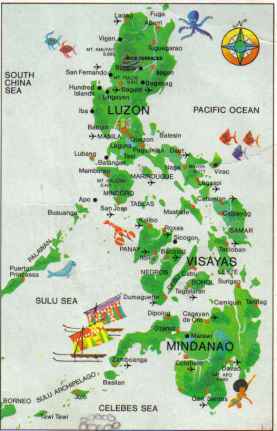
The Philippine Map [Image courtesy of Bulaclac Paruparu via Flickr CC BY 2.0]
The separate land masses may have played a role in why, within our nation, we have so many different languages and dialects (about 120 to 187). Sometimes, the same word could mean different things in different provinces, so be careful about mixing them up (because some mix-ups could get you into trouble! haha). When we go to another island with a dialect different from our own, we typically use the national language (Filipino/Tagalog) as it’s understood by most, if not all.
…
2. This is our national flag:
![Image by Storm Crypt [http://www.flickr.com/photos/storm-crypt/] via Flickr [http://www.flickr.com/photos/storm-crypt/2636651166/]](https://inkblotsandicebergs.files.wordpress.com/2013/11/phil-flag.jpg?w=457&h=329)
The Philippine Flag [Image by Storm Crypt via Flickr CC BY-NC-ND 2.0]
…
3. One of our greatest national heroes is Dr. Jose Rizal (often referred to as *the* national hero, but apparently, there’s no official statement on this). He lived in the late 1800s. He was a medical doctor (an ophthalmologist) and a polymath, learned in multiple languages, sociology, architecture, poetry, and sketching.
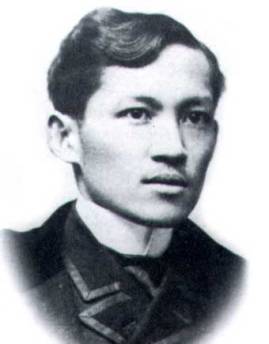
Dr. Jose Rizal [Image via Wikimedia Commons]
…
4. We have a lot of beautiful beaches and island resorts here. One of the most famous is of course the white-sand beaches of Boracay, although over the years most of it (except maybe Station 1) has become quite crowded, and is thus not very relaxing a place to vacation in if you want peace and quiet. The night life there is very alive, though, so if you love parties, then it’s a fun place to be in.
A more popular tourist attraction nowadays is the island paradise of El Nido, Palawan—which I am ashamed to admit I haven’t even been to! Haha. I should really plan on visiting this place sometime soon so I could tell you more about it from a personal view.
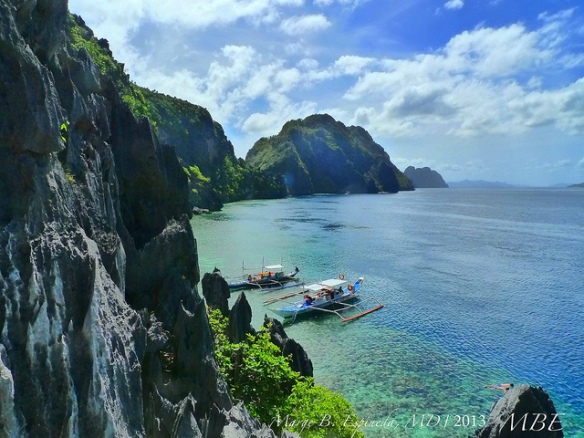
El Nido, Palawan, Philippines 2013 [Image by Marge Espineda via Flickr CC BY 2.0]

El Nido, Palawan, Philippines 2015 [Image by Deena ElKhattam/Trip & Travel Blog via Flickr CC BY 2.0]
…
5. We love to eat! Our staple food is rice. Most of us eat rice during breakfast, lunch, and dinner. We eat rice along with a viand (“ulam”), which in the Philippine context means a meat and/or vegetable dish that’s served with the rice.

Rice and seafood, anyone? [Image by Thomas Galvez via Flickr CC BY 2.0]
…
6. We’re a family-oriented and collectivist people. It’s common to have extended family (grandparents, aunts/uncles, cousins) living in the same home. Elders are shown respect in language (we add the word “po” in our sentences when talking to someone older than us) and gestures (the “mano”, shown below). Personal decisions (e.g. choice of college course or person to marry) are often expected to be made in consult with other family members, and the family’s opinion on these matters are typically given much weight.
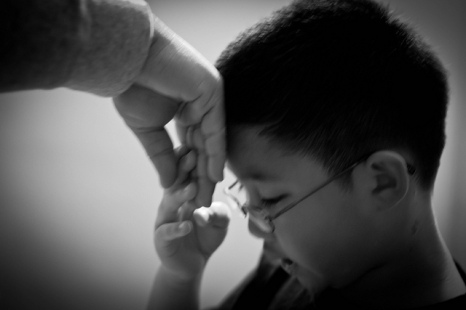
“Mano po” ~ a sign of respect for the elderly [Image by Angel N via Flickr CC BY-NC-ND 2.0]
…
7. Our culture is rich in folk tales, mythical creatures, and superstitions (“pamahiin”). Not all Filipinos believe in them, but they’re an important part of our culture. No Filipino child grows up without having heard a story about how the “aswang” (witch) might grab and then eat them if they stay out too late into the night. Also, we don’t even try to cut our nails or sweep the floor at night when our superstitious grandmothers are around. Otherwise, we’ll be told off for driving away good luck.
There’s also the tale of the manananggal (from “tanggal”, which means “detach”), which is a woman who can detach the upper part of her body from the waist up. She grows wings that look like those of a bat (only waaay larger), allowing her upper body to travel in search of a sleeping pregnant woman, whose unborn child she then sucks out from the mother’s navel using her very, very long tongue. Yeah, it’s weird, I know. But oh, how scary if it were real, right?

The “Manananggal” [Image courtesy of PhilippineTales]
…
8. We hold a lot of festivities, from fiestas in the barangays (the native term for a village/neighborhood) to city-wide festivals. No month goes by without a celebration going on somewhere in the country. It seems just about everything is celebrated and honored, from the mango fruit (Manggahan Festival in Guimaras Island) to the child Jesus (Sinulog Festival in Cebu City).

Sinulog Festival, Cebu City, Philippines [Image by Constantine Agustin via Flickr CC BY-SA 2.0]
…
9. We’re very hospitable hosts. When you’re a guest in a Filipino home, expect the host to have thoroughly cleaned every nook and cranny of the house, to have changed all the pillowcases and bed linen to freshly laundered ones, and to break out all the new dinnerware just for you. You’ll also be fed SO MUCH delicious food and will not be allowed to help in any of the housework. If there’s no bed to accommodate an extra person in the house, the host will insist that you sleep on their bed while they sleep on the sofa or a mat (“banig”) on the floor.

The “bahay kubo” (literally, “cube house”), a native Philippine shelter [Image by Walter via Flickr CC BY 2.0]
I’m pleased to share that thus far, the guests and foreigners I know of have all been gracious people who never abused this hospitality and couldn’t express their gratitude enough for such a generous welcome.
…
10. We smile a lot! We smile because we’re generally a cheerful people. We smile because we’re glad to see you. We smile because it’s our way of wishing you a good day. But we may also smile because of other things. Sometimes we smile because we’re embarrassed or don’t know how to respond to the situation. We may smile because words fail us. We may smile because it’s our way of apologizing, or sometimes even our way of expressing disagreement without being disagreeable.

Images by Richard Messenger via Flickr [CC BY-NC 2.0]
I can’t speak for every other Filipino, but what I’ve observed (and learned in Filipino psychology) is that it’s because Filipinos generally want to avoid interpersonal conflict and even the slightest possibility of hurting someone, especially someone whose friendship or good regard they value. And for many Filipinos, disagreeing with what someone said or directly declining an invitation are often feared to be acts which may spark conflict or offend the other person. So instead of saying something, what do we do? We smile. 🙂
…
With that, I end this mini-crash course on the Philippines and on being Filipino. I hope you got to discover something new about us, something different from life as you know it in your slice of the Earth, or maybe something similar to your own culture or experience.
After all, we may be of varying ethnicities and cultures, but the deeper thread of humanity that connects people with one another is the same in all of us. ♥
…

Image by Brian Evans via Flickr CC BY-ND 2.0
…
…
This entry is part of my undertaking a 30-day challenge Matt Cutts talked about at TED2011. The premise is to “think about something you’ve always wanted to add to your life and try it for the next 30 days.” I am challenging myself to post one blog entry a day for 30 consecutive days. [I’ve given up on the ‘consecutive’ part, but I intend to finish the 30 days!]
Today is Day 29.
…
• About the Author •
…
…
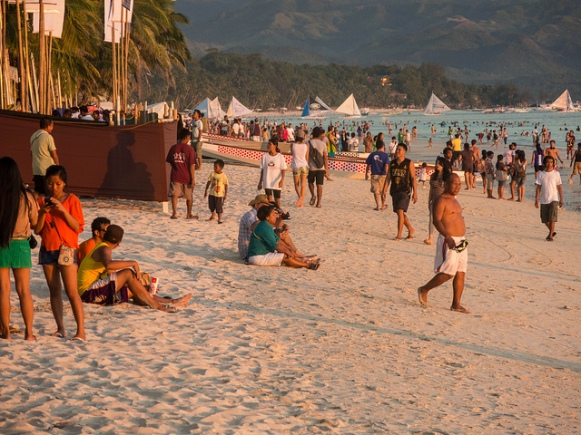
Philippines is on our bucket list as my husband is crazy about sea. It is his dream to visit all major South China Sea beaches. And I remember that scary creature; have u seen the series Grimm? There was a episode there featuring this demon.
LikeLiked by 1 person
Great to hear you’re planning to visit our country! Hope your beach experience here will be an enjoyable one. 🙂
I don’t watch the Grimm, but it’ll be interesting to see that episode. I’ll look it up!
LikeLike
This is really interesting and educational – thanks for sharing about your country 🙂 I’m blogging from Scotland, born and brought up in the UK, but my parents are from Asia originally …always nice to learn about other cultures and countries! 🙂
LikeLiked by 1 person
My pleasure! Glad you enjoyed reading this. Hello to Scotland, from the Philippines! ❤
LikeLiked by 1 person
Hi Philippines from a very snowy Scotland! 🙂 x
LikeLiked by 1 person
It’s funny — I used to think about how it would be a proper sensible thing to visit for at least one day and night every one of the 50 states in my birth country, USA. (I’m stuck at 44.) Imagine if the Filipino wanted to make it his or her mission to visit each of the 7000 odd islands though? I came across several groups of musicians who were Filipino while living in interior China over 20 years ago, and also in Thailand. Someone told me they are fast learners and good at mimicking other culture’s music. Which is another interesting fact about the Phillippines.
LikeLiked by 1 person
Wow–still, 44’s close! I’ve heard of some Filipinos making it a mission to travel to all provinces in the Philippines (there are 81 in total). As for the 7000+ islands, not all of them is inhabited anyway–most aren’t larger than a square km. So I guess no one has yet listed visiting all islands in their bucketlist–or I might just not know of it, haha!
I agree that Filipinos are fast learners, probably as there is often a need to adapt and be resourceful in situations that are changing all the time (e.g. OFWs having to learn the ways of a different country, typhoon/calamity survivors needing to adjust to a life wiped clean of their possessions/loved ones). Adversity requires that we learn fast. And yes, we are pretty good at mimicking, I believe there’s an impression of Filipinos being great impersonators.
Thanks for joining the conversation; I appreciate your insights very much!
LikeLike
This was a fascinating read. Thank you for sharing 😊
LikeLiked by 1 person
My pleasure! Thank you so much for dropping by! 🙂
LikeLike
Thank you for a little glimpse into your country and its people. My next book will have to be on the Philippines.
LikeLiked by 1 person
My pleasure! Oh wow, that’s great to hear–a book with the Philippines as subject/setting sounds interesting!
LikeLiked by 1 person
It was great knowing about the Philippines. Being an islander myself, there are so many things similar in my own country, Mauritius.
LikeLiked by 1 person
Thank you so much for reading! I’m sad to say I don’t know a lot about Mauritius, but I’m very interested in learning more about it. If you ever wanna make a post like this about your country too, I’d love to see it! 🙂
LikeLike
Actually I do have a post coming up. Tomorrow is the annual celebration of the Independence day. Will send you the link when it’s out!
LikeLiked by 1 person
Interesting! Makes me want to visit the Philippines
LikeLiked by 1 person
Thank you for reading! Yes, please do come visit when you get the chance! 🙂
LikeLike
I loved your mini-crash-course on The Philippines. Very well-written overview, some details new to me (the red in the flag when it’s wartime?) and I found myself … smiling 🙂 but that’s maybe because my mother was Spanish-Chinese-Filipina mestiza …
LikeLiked by 1 person
Thank you so much, Bea! Glad this has given you some new info, and a reason to smile too. Wow, that would mean you have Filipina blood too, so we’re practically part-kababayan! (that’s a local term for fellow-countryman/countrywoman) 😉
LikeLiked by 1 person
Yes, I’m honoured! 🙂
LikeLiked by 1 person
Never been to the Philippines, and love the island type of race, i’m sure i’d find it incredibly exciting, one day I will go there. Oh yes!!
LikeLiked by 1 person
So glad to hear your enthusiasm about giving our country a visit! 🙂
LikeLike